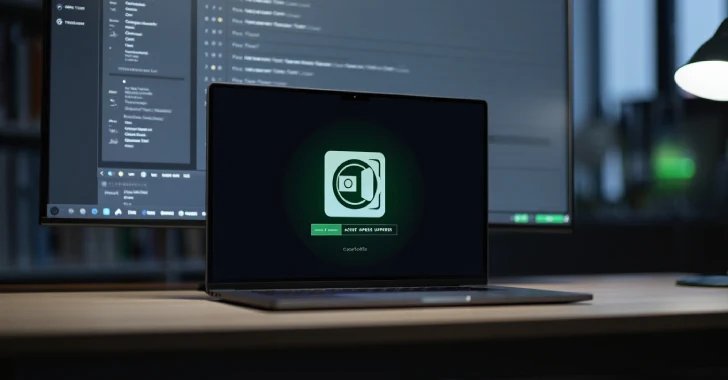Essential Insights
-
Vulnerability Discovery: Cybersecurity researchers uncovered over a dozen vulnerabilities, dubbed "Vault Fault," in CyberArk and HashiCorp enterprise secure vaults—threatening corporate identity systems and allowing unauthorized access to sensitive data.
-
Severity and Impact: Key vulnerabilities include severe issues like remote code execution (CVE-2025-49828 and CVE-2025-6000, CVSS scores up to 9.1) which could let attackers gain control over vaults without valid credentials, showcasing potential for data breaches and exploitation.
-
Exploitation Methods: Attackers can exploit these flaws through an intricate chain, enabling unauthorized access and privilege escalation, ultimately allowing execution of malicious code without authenticating (e.g., through IAM authentication bypass).
- Wider Threat Landscape: Similar vulnerabilities were identified in Dell’s ControlVault3, potentially allowing attackers to maintain covert access to systems, emphasizing the need for immediate patching and additional security measures to protect high-value environments.
Underlying Problem
In a significant cybersecurity revelation, researchers from Cyata have identified a series of severe vulnerabilities, collectively dubbed “Vault Fault,” within enterprise secure vaults provided by CyberArk and HashiCorp. These 14 vulnerabilities, affecting major products like CyberArk Secrets Manager and HashiCorp Vault, could allow remote attackers to compromise corporate identity systems, leading to unauthorized access to sensitive enterprise secrets and codes. The vulnerabilities include serious issues such as authentication bypasses, privilege escalation, and remote code execution, which could enable an attacker to commandeer a vault without the need for valid credentials, essentially transforming critical security features into threats.
This alarming situation has been reported not only by Cyata but also intersects with related discoveries by Cisco Talos regarding vulnerabilities in Dell’s ControlVault3 Firmware. The implications of these findings extend to over 100 models of Dell laptops, which could potentially allow unauthorized access and persist even after an operating system reinstall. Both reports elucidate how sophisticated attack chains can evolve from basic authentication bypass techniques, enabling attackers to execute arbitrary code and maintain stealthy, undetected access to high-value environments. As highlighted by security researcher Yarden Porat, these vulnerabilities exemplify the delicate interplay of authentication, policy enforcement, and plugin execution, raising critical concerns over the integrity of identity security in enterprise environments.
Critical Concerns
The discovery of vulnerabilities within enterprise secure vaults from CyberArk and HashiCorp, collectively termed “Vault Fault,” presents significant risks not only to the entities directly impacted but also to businesses, organizations, and users across interlinked sectors. With vulnerabilities allowing remote code execution, authentication bypasses, and privilege escalations, the potential for malicious exploitation could result in unauthorized access to sensitive corporate secrets and credentials, ultimately dismantling trust in identity management systems. As attackers could orchestrate complex exploit chains, stemming breaches might escalate into widespread data leaks or ransomware deployments, jeopardizing operational integrity and precipitating catastrophic financial and reputational fallout across the business ecosystem. Furthermore, the interdependencies in today’s digital landscape mean that the compromise of a single vault could trigger a cascade effect, exposing connected systems to vulnerabilities, hence amplifying the risk and severity of such cyber incidents across the board. Ultimately, the ramifications extend far beyond immediate victims, casting a shadow of insecurity over the larger corporate landscape, necessitating rigorous vigilance and prompt remediation efforts.
Possible Actions
Timely remediation is crucial in safeguarding sensitive data from vulnerabilities such as those found in CyberArk and HashiCorp, which can enable remote vault takeovers without the necessity for credentials.
Mitigation Steps
- Patch Vulnerabilities
- Implement Access Policies
- Monitor Activity Logs
- Conduct Security Audits
- Enforce Multi-Factor Authentication
- Educate Employees
- Limit User Privileges
NIST CSF Guidance
The NIST Cybersecurity Framework (CSF) emphasizes the importance of identifying, protecting, detecting, responding to, and recovering from cybersecurity incidents. Specifically, refer to NIST SP 800-53 for comprehensive controls and best practices aligned with the mitigation of such vulnerabilities.
Explore More Security Insights
Explore career growth and education via Careers & Learning, or dive into Compliance essentials.
Understand foundational security frameworks via NIST CSF on Wikipedia.
Disclaimer: The information provided may not always be accurate or up to date. Please do your own research, as the cybersecurity landscape evolves rapidly. Intended for secondary references purposes only.
Cyberattacks-V1

